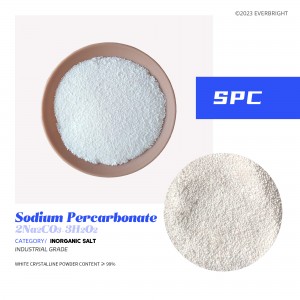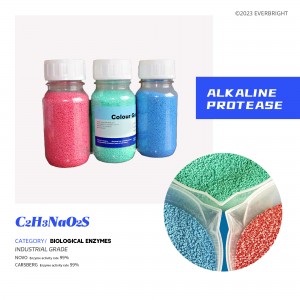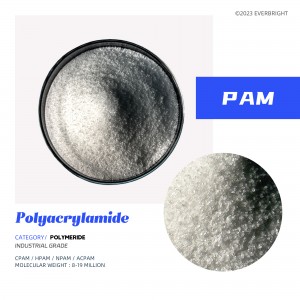-

Sodium Peroxyborate
Sodium perborate is an inorganic compound, white granular powder. Soluble in acid, alkali and glycerin, slightly soluble in water, mainly used as oxidant, disinfectant, fungicide, mordant, deodorant, plating solution additives, etc. Mainly used as oxidant, disinfectant, fungicide, mordant, deodorant, plating solution additive and so on.
-

Sodium Percarbonate(SPC)
Sodium percarbonate appearance is white, loose, good fluidity granular or powdery solid, odorless, easily soluble in water, also known as sodium bicarbonate. A solid powder. It is hygroscopic. Stable when dry. It slowly breaks down in the air to form carbon dioxide and oxygen. It quickly breaks down into sodium bicarbonate and oxygen in water. It decomposes in dilute sulfuric acid to produce quantifiable hydrogen peroxide. It can be prepared by the reaction of sodium carbonate and hydrogen peroxide. Used as an oxidizing agent.
-

Alkaline Protease
The main source is microbial extraction, and the most studied and applied bacteria are mainly Bacillus, with subtilis as the most, and there are also a small number of other bacteria, such as Streptomyces. Stable at pH6 ~ 10, less than 6 or more than 11 quickly deactivated. Its active center contains serine, so it is called serine protease. Widely used in detergent, food, medical, brewing, silk, leather and other industries.
-

Boric Acid
It is a white crystalline powder, with a smooth feel and no odor. Its acidic source is not to give protons by itself. Because boron is an electron deficient atom, it can add hydroxide ions of water molecules and release protons. Taking advantage of this electron-deficient property, polyhydroxyl compounds (such as glycerol and glycerol, etc.) are added to form stable complexes to strengthen their acidity.
-

Hydrofluoric Acid (HF)
It is an aqueous solution of hydrogen fluoride gas, which is a transparent, colorless, smoking corrosive liquid with a strong pungent odor. Hydrofluoric acid is an extremely corrosive weak acid, which is highly corrosive to metal, glass and silicon-containing objects. Inhalation of steam or contact with skin can cause burns that are difficult to heal. The laboratory is generally made of fluorite (the main component is calcium fluoride) and concentrated sulfuric acid, which needs to be sealed in a plastic bottle and stored in a cool place.
-

Sodium Bisulfate
Sodium bisulphate, also known as sodium acid sulfate, is sodium chloride (salt) and sulfuric acid can react at high temperatures to produce a substance, anhydrous substance has hygroscopic, aqueous solution is acidic. It is a strong electrolyte, completely ionized in the molten state, ionized into sodium ions and bisulfate. Hydrogen sulfate can only self-ionization, ionization equilibrium constant is very small, can not be completely ionized.
-

4A Zeolite
It is a natural alumino-silicic acid, salt ore in the burning, due to the water inside the crystal is driven out, producing a phenomenon similar to bubbling and boiling, which is called “boiling stone” in image, referred to as “zeolite”, used as a phosphate-free detergent auxiliary, instead of sodium tripolyphosphate; In the petroleum and other industries, it is used as a drying, dehydration and purification of gases and liquids, and also as a catalyst and water softener.
-

Calcium Hydroxide
Hydrated lime or hydrated lime It is a white hexagonal powder crystal. At 580℃, the water loss becomes CaO. When calcium hydroxide is added to water, it is divided into two layers, the upper solution is called clarified lime water, and the lower suspension is called lime milk or lime slurry. The upper layer of clear lime water can test carbon dioxide, and the lower layer of cloudy liquid lime milk is a building material. Calcium hydroxide is a strong alkali, has bactericidal and anti-corrosion ability, has a corrosive effect on skin and fabric.
-

Ferrous Sulfate
Ferrous sulfate is an inorganic substance, the crystalline hydrate is heptahydrate at normal temperature, commonly known as “green alum”, light green crystal, weathered in dry air, the surface oxidation of brown basic iron sulfate in humid air, at 56.6℃ to become tetrahydrate, at 65℃ to become monohydrate. Ferrous sulfate is soluble in water and almost insoluble in ethanol. Its aqueous solution oxidizes slowly in air when it is cold, and oxidizes faster when it is hot. Adding alkali or exposure to light can accelerate its oxidation. The relative density (d15) is 1.897.
-

Potassium Hydroxide (KOH)
It is a kind of inorganic compound, the chemical formula is KOH, is a common inorganic base, with strong alkalinity, the pH of 0.1mol/L solution is 13.5, soluble in water, ethanol, slightly soluble in ether, easy to absorb water in the air and deliquescent, absorb carbon dioxide and become potassium carbonate, mainly used as raw materials for the production of potassium salt, can also be used for electroplating, printing and dyeing.
-

Polyacrylamide(Pam)
(PAM) is a homopolymer of acrylamide or a polymer copolymerized with other monomers. Polyacrylamide (PAM) is one of the most widely used water-soluble polymers. (PAM) polyacrylamide is widely used in oil exploitation, paper making, water treatment, textile, medicine, agriculture and other industries. According to statistics, 37% of the world’s total polyacrylamide (PAM) production is used for wastewater treatment, 27% for the petroleum industry, and 18% for the paper industry.
-

Ammonium Chloride
Ammonium salts of hydrochloric acid, mostly by-products of the alkali industry. Nitrogen content of 24% ~ 26%, white or slightly yellow square or octahedral small crystals, powder and granular two dosage forms, granular ammonium chloride is not easy to absorb moisture, easy to store, and powdered ammonium chloride is more used as a basic fertilizer for the production of compound fertilizer. It is a physiological acid fertilizer, which should not be applied on acidic soil and saline-alkali soil because of more chlorine, and should not be used as seed fertilizer, seedling fertilizer or leaf fertilizer.







